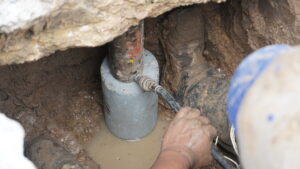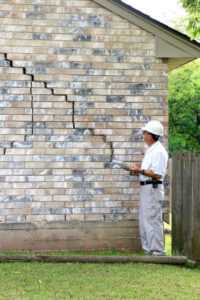Oh No, Not My Foundation! Is it Possible to Fix?
Hey there, fellow homeowner! Let’s talk about something that probably keeps you up at night more than that creaky floorboard or dripping faucet – your home’s foundation. I mean, it’s the backbone of your house, right?
So when things start going south down there, it’s normal to freak out a little (or a lot). But here’s the million-dollar question: is it possible to fix a foundation that’s decided to throw in the towel? Spoiler alert: there’s hope! Let’s dive in and find out.
What’s the Deal with Failing Foundations?
First things first, we need to get to the bottom of what’s causing your foundation to have a meltdown. It could be a bunch of things – shoddy construction (ugh), soil that can’t make up its mind, or water doing its best to wreak havoc.
The tricky part? The signs can be super subtle. We’re talking about sneaky cracks in your walls, doors that suddenly have attitude problems and won’t close right, or floors that are trying to mimic a rollercoaster.
I get it – the moment you spot any of these, your brain probably goes into panic mode. But hey, knowledge is power, right? The sooner you catch these little red flags, the easier (and cheaper) it will be to fix. So keep those eyes peeled!
It’s All About That Base (Soil, That Is)
Let’s get down and dirty for a second – literally. The soil under your house is like that friend who can either have your back or let you down. Some types of soil, especially the clay-heavy stuff, act like a temperamental sponge.
When it’s wet, it swells up; when it’s dry, it shrinks. This on-again-off-again routine can make your foundation feel like it’s on a bad amusement park ride.
And don’t even get me started on water. It’s like that frenemy who seems helpful but is secretly plotting against you. A little moisture keeps the soil happy, but too much? That’s when erosion crashes the party and things start getting shifty – literally. But is it possible to fix it?
Spot the Trouble Before It Spots You
Alright, detective, time to channel your inner Sherlock. Keeping an eye out for early warning signs is your best bet. Those hairline cracks you’ve been ignoring? They’re your house’s way of waving a red flag and yelling, “Hey! Something’s up down here!”
And it’s not just about the cracks. If your doors and windows are suddenly acting like moody teenagers (you know, not cooperating), that could be your foundation’s cry for help. Even the tiniest shifts can throw everything out of whack.
When to Call in the Cavalry
Look, I’m all for DIY projects. Painting a room? Go for it. Building a bookshelf? You’re a champ. But when it comes to your foundation? Is it possible to fix it on your own?
That’s when you want to bring in the big guns. Foundation experts are like the superheroes of the home repair world. They’ve got the know-how and the cool gadgets to figure out what’s going on.
Calling in a pro doesn’t mean you’re admitting defeat. Think of it more like forming a dynamic duo to tackle the problem head-on. The sooner you team up, the better your chances of avoiding a full-blown foundation fiasco.
How the Pros Work Their Magic
So, what tricks do these foundation wizards have up their sleeves?
There are a couple of go-to moves:
- Underpinning: Fancy word, but it means giving your foundation a boost. They might go deeper or add some extra support to deal with that problematic soil.
- Slab jacking: This one’s like giving your concrete a little lift. They inject a special mixture underneath to raise sunken areas. It’s less invasive and easier on the wallet for smaller issues.
Both of these methods aim to get your foundation back on solid ground (pun intended).
Let’s Talk Money, Honey
I’m not gonna sugarcoat it – fixing your foundation isn’t exactly cheap. But think of it as an investment in your home’s future. Minor fixes might set you back a couple grand, while major overhauls could hit the tens of thousands.
Before you start hyperventilating, consider this. What’s the cost of not fixing it? We’re talking decreased property value, scaring off potential buyers if you ever want to sell, and possibly even more damage to your home. When you look at it that way, the repair costs start to make a lot more sense.
An Ounce of Prevention…
You know what they say – an ounce of prevention is worth a pound of cure. And boy, does that apply here. Regular maintenance can save you a world of hurt (and a ton of cash) down the line.
Here are some quick tips:
- Make sure water flows away from your house, not towards it. Your foundation doesn’t need a moat.
- Keep an eye on your landscaping. Those big, beautiful trees? Make sure they’re not too close to your foundation, sucking up all the moisture.
- Do regular walk-arounds of your house, inside and out. Catch those little issues before they become big problems.
- Insurance: Your Safety Net (Maybe)
Here’s a fun homework assignment for you (just kidding, but seriously, do this): check your homeowner’s insurance policy. Some policies cover foundation issues, some don’t. It’s worth knowing what you’re dealing with before you’re in crisis mode. If your current policy doesn’t cover foundation problems, you might want to look into additional coverage. Think of it as a financial safety net for your home’s health.
You’ve Got This!
So, is it possible to fix a collapsing home foundation? Absolutely! Is it always easy? Nope. But with the right knowledge, some professional help, and a proactive attitude, you can definitely tackle this challenge.
Remember, your home is more than just a building – it’s your sanctuary. Taking care of its foundation is like giving it a big, structural hug. So take a deep breath, make a plan, and know that you’re doing the best thing for your home (and your peace of mind).
